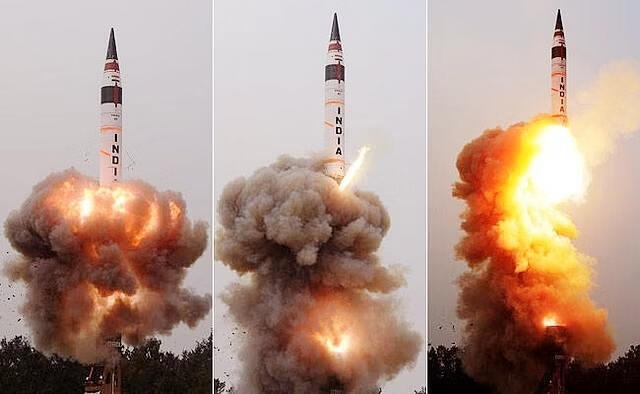India has more nuclear weapons than Pakistan, although China has a lot more nuclear weapons than both of them. Swedish think tank Stockham International Peace Research Institute has said in a report released on Monday that India has 172 and Pakistan has 170 nuclear weapons, while China is said to have 500 nuclear weapons. The Supreme Court has said in the year 2024 that any country with nuclear weapons, America, Russia, Britain, France, China, India, Pakistan, North Korea and Israel are constantly modernizing their nuclear weapons and have either deployed new nuclear weapons or have installed new systems carrying nuclear weapons last year. According to the report, in January 2024, there were 12221 warheads all over the world, out of which 9585 weapons are kept in stock for potential use. From the data in the report, it seems that China is developing nuclear weapons to counter the increasing and ongoing nuclear warheads between India and Pakistan, while India’s focus is on long-range launches such weapons that can hit China. The report says that in January 2023, China had a stockpile of 410 nuclear warheads, but it is likely to be exhausted by January 2024. According to the report, China may have also placed some nuclear warheads in missiles. It also says that it will be interesting to see how China can structure its service in the next few years so that it can deploy as many intercontinental ballistic missiles as possible like the US and Russia, although China’s stockpile of weapons is much smaller than that of Russia and the US.
Talking to BBC correspondent Iqbal Ahmed on the report of defense analyst and former South Asia correspondent of defense magazine Jane’s Defense Weekly, Rahul Bedi, he said that the biggest thing in this report is that China’s stock of nuclear weapons is increasing. Today it has 500 nuclear weapons. According to the report, Russia and America have 90 percent of the total nuclear weapons stock of the world. There may not have been any increase in the nuclear weapon stock of both in 2023, but in January 2023, Russia would have deployed 36 warheads. Although there have been continuous claims that Russia has deployed nuclear weapons on the land of Belarus, but no such evidence was found about installing nuclear warheads. However, both Russia and America have removed 1200 nuclear weapons from their stockpile. BBC asked Rahul Bedi that Western countries have a very large nuclear weapon stockpile, so how can we talk about stopping China? Compared to these countries, China has very few weapons. On this question, he said that in the case of nuclear weapons, this thing is It does not matter much how many weapons a country has, what matters is how many scholars it has. According to the report, 2100 more heads have been fitted into ballistic missiles and kept in operational alert across the world. Almost all of these belong to either the US or Russia. Although for the first time China has also placed some of its more heads in this position. North Korea has 50 nuclear warheads. It is rapidly moving ahead in the direction of making more nuclear weapons. The CIPRIC report says that developing nuclear weapons has become an important part of its national security strategy. Shivpuri’s assessment is that North Korea has so much nuclear material that it can make 90 nuclear warheads.
In 2024, India’s nuclear weapons program will continue to evolve and modernize, and will be in a long rage that will significantly enhance its strategic capabilities. One of the notable advancements is the successful test of the Agni-5 missile, which now incorporates Multiple Independently Targetable Re-entry Vehicle (MIRV) technology. This allows a single missile to carry multiple nuclear warheads, increasing India’s ability to simultaneously target multiple locations and evade missile defenses, and is also accompanied by the Agni Prime missile.
India’s nuclear arsenal includes an estimated 164 weapons, with the latest report putting the number at 175, more than Pakistan’s arsenal and contributing to regional strategic stability. The development of MIRV technology for the Agni-5 missile is a major leap forward in India’s nuclear capabilities, potentially enabling it to carry four or five weapons per missile, carrying 1,000 kg of nuclear warheads.
The BrahMos missile, jointly developed with Russia, remains a vital component of India’s nuclear strike capabilities. Different variants of the BrahMos can be launched from land, sea and air platforms, and an extended range version is under development, expected to reach 600 km.
The advanced BrahMos 1, 2 Hypersonic cruise missile, considered faster than the air, has been combined.
In addition, the Nirbhay cruise missile, with a range of 800-1,000 km, is undergoing further tests to ensure its reliability. These are also very advanced, Cruise missiles, Agni-I, Dhanush, Prithvi I and 2, Shaurya Prahaar, Astra missile, Barak-8, Trishul, Mica, then – k -1, k-4, k -11, these are also India’s fissile material stockpile includes about 0.7 metric tons of weapons-grade plutonium, enough for more than 100 additional warheads, and significant quantities of reactor-grade plutonium and highly enriched uranium. The country is investing in fast breeder reactors to increase plutonium production and has agreements with the International Atomic Energy Agency (IAEA) to safeguard its civilian nuclear reactors. Overall, India’s advances in missile technology and strategic stockpile of fissile materials underscore its commitment to maintaining a credible and modern nuclear deterrent. Pakistan
By 2024, Pakistan will continue to expand its stockpile of nuclear weapons, which currently consists of about 170 warheads. This expansion reflects a continuing trend of increases in both the number of warheads and the sophistication of delivery systems and fissile material production capabilities.
Here’s a table listing some of the key missiles developed by India along with their types and notable features:
| Missile Name | Type | Range | Notable Features |
| Agni-V | Intercontinental Ballistic Missile (ICBM) | 5,000 – 8,000 km | Canister-based; solid-fueled; nuclear-capable |
| Prithvi-II | Short-range Ballistic Missile (SRBM) | 250 – 350 km | Liquid-fueled; nuclear and conventional warheads |
| BrahMos | Supersonic Cruise Missile | 300 – 500 km | Jointly developed with Russia; can be launched from land, sea, and air; fastest cruise missile in the world |
| Nirbhay | Subsonic Cruise Missile | 1,000 – 1,500 km | Long-range; capable of carrying nuclear warheads |
| Akash | Surface-to-Air Missile (SAM) | 25 – 30 km | Mobile air defense system; multi-target capability |
| Nag | Anti-Tank Guided Missile (ATGM) | 4 – 7 km | Fire-and-forget; infrared guidance |
| Astra | Air-to-Air Missile | 80 – 110 km | Beyond visual range; active radar homing |
| K-4 | Submarine-Launched Ballistic Missile (SLBM) | 3,500 km | Nuclear-capable; enhances second-strike capability |
These missiles represent a broad spectrum of India’s strategic and tactical capabilities in missile technology.
How many nuclear missiles are there in Pakistan?
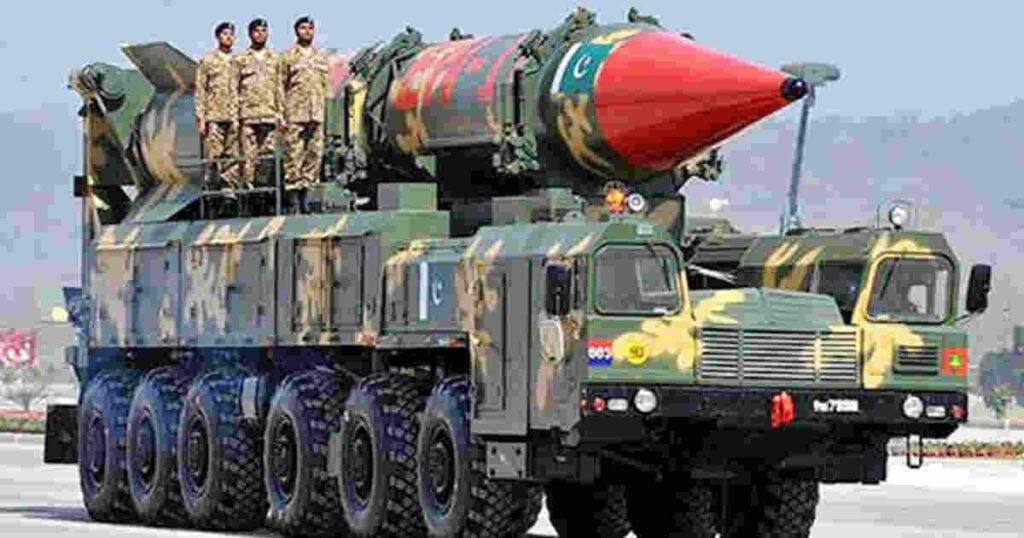
Pakistan’s nuclear strategy differs from India’s. Instead, Pakistan emphasizes the development of tactical nuclear weapons to balance India’s superior conventional military forces.
| Missile Name | Type | Range | Notable Features |
| Shaheen-III | Intermediate-Range Ballistic Missile (IRBM) | 2,750 km | Solid-fueled; nuclear-capable |
| Ghauri | Medium-Range Ballistic Missile (MRBM) | 1,500 – 1,800 km | Liquid-fueled; nuclear and conventional warheads |
| Babur | Subsonic Cruise Missile | 700 – 1,000 km | Terrain-hugging; capable of carrying nuclear warheads |
| Nasr | Short-Range Ballistic Missile (SRBM) | 60 – 70 km | Tactical nuclear weapon; designed for quick deployment |
| Hatf-V (Ghauri-II) | Medium-Range Ballistic Missile (MRBM) | 2,000 km | Liquid-fueled; nuclear-capable |
| Ra’ad | Air-Launched Cruise Missile (ALCM) | 350 km | Low altitude; stealth capabilities |
| Shaheen-I | Short-Range Ballistic Missile (SRBM) | 750 km | Solid-fueled; nuclear-capable |
| Abdali (Hatf-II) | Short-Range Ballistic Missile (SRBM) | 200 – 250 km | Mobile; nuclear and conventional warheads |
These missiles reflect Pakistan’s focus on both strategic deterrence and tactical battlefield capabilities.
Pakistan’s nuclear infrastructure includes several key facilities involved in the production, testing, and regulation of nuclear and missile technologies. Notable facilities include the Khan Research Laboratories, Pakistan Ordnance Factories, and the National Command Authority. If the current rate of growth continues, Pakistan’s nuclear stockpile could reach 220 to 250 warheads by 2025. This expansion underscores the ongoing regional security challenges in South Asia and the potential risks of nuclear escalation.
How many nuclear warheads does China have in 2024?
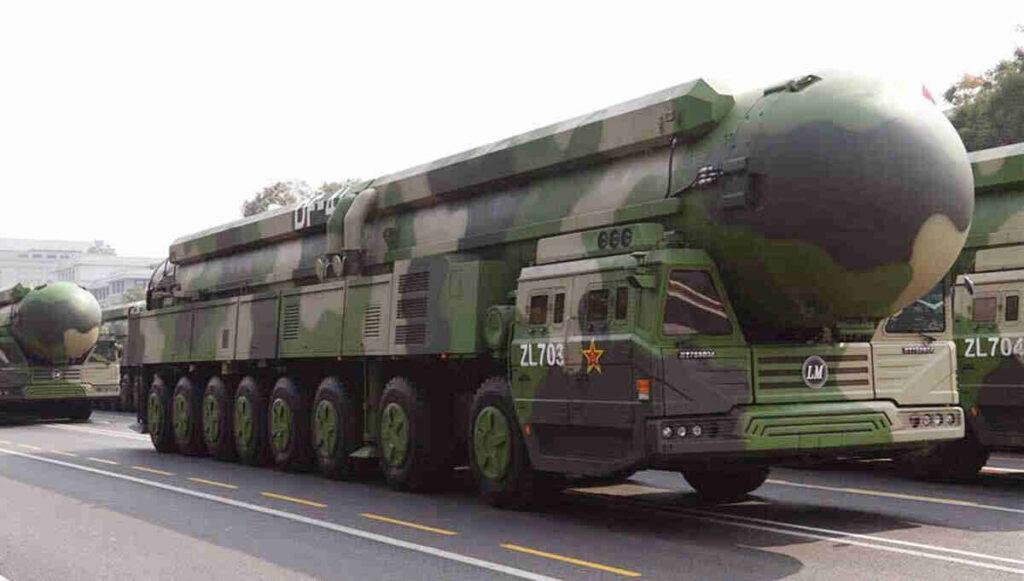
By 2024, China will continue significantly expanding and modernizing its nuclear arsenal, aiming to increase its stockpile substantially. Currently, China is estimated to have about 500 operational nuclear weapons, with estimates suggesting that this number could rise to nearly 1,500 by 2035 if the current pace of expansion continues.
HY-2 Hai Ying short-range anti-ship subsonic cruise missile. ,YJ-83 ,YJ-91 Antiship missile. YJ-18 Antiship/Land-attack missile. CJ-10 (DF-10) Land-attack cruise missile.
| Missile Name | Type | Range | Notable Features |
| DF-41 (Dongfeng-41) | Intercontinental Ballistic Missile (ICBM) | 12,000 – 15,000 km | Solid-fueled; multiple independently targetable reentry vehicles (MIRV) |
| DF-21D (Dongfeng-21D) | Medium-Range Ballistic Missile (MRBM) | 1,450 km | Anti-ship ballistic missile (ASBM); designed to target aircraft carriers |
| DF-26 (Dongfeng-26) | Intermediate-Range Ballistic Missile (IRBM) | 3,000 – 4,000 km | Dual-capable (conventional and nuclear); anti-ship capability |
| CJ-10 (Changjian-10) | Land-Attack Cruise Missile (LACM) | 1,500 – 2,500 km | Air, ship, and ground-launched variants; capable of carrying nuclear warheads |
| YJ-18 (Yingji-18) | Anti-Ship Cruise Missile (ASCM) | 540 km | Subsonic cruise; terminal supersonic sprint; launched from ships and submarines |
| DF-17 (Dongfeng-17) | Hypersonic Glide Vehicle (HGV) | 1,800 – 2,500 km | Hypersonic speed; highly maneuverable; designed to penetrate missile defenses |
| DF-5B (Dongfeng-5B) | Intercontinental Ballistic Missile (ICBM) | 13,000 km | Liquid-fueled; MIRV-capable |
| HQ-9 (Hongqi-9) | Surface-to-Air Missile (SAM) | 200 km | Long-range; comparable to the Russian S-300 system |
| DF-15 (Dongfeng-15) | Short-Range Ballistic Missile (SRBM) | 600 – 900 km | Solid-fueled; mobile; nuclear and conventional warheads |
These missiles illustrate China’s extensive range of missile capabilities, covering strategic deterrence, anti-ship, and advanced hypersonic technologies.
The country is developing new intercontinental ballistic missiles (ICBMs) and upgrading its existing missile silos to improve readiness and survivability. This includes the deployment of new missile variants such as the DF-26, which has dual capabilities for conventional and nuclear weapons Additionally, China is further enhancing its sea-based nuclear deterrent by arming its Type 094 ballistic missile submarines with new JL-3 submarine-launched ballistic missiles (SLBMs), which have a range long enough to reach the continental United States. This development will increase the range of its rockets to 100 million km (1,200 mi) compared to the previous JL-3 missiles
What is the US’s biggest nuclear missile and powerful nuclear weapons?
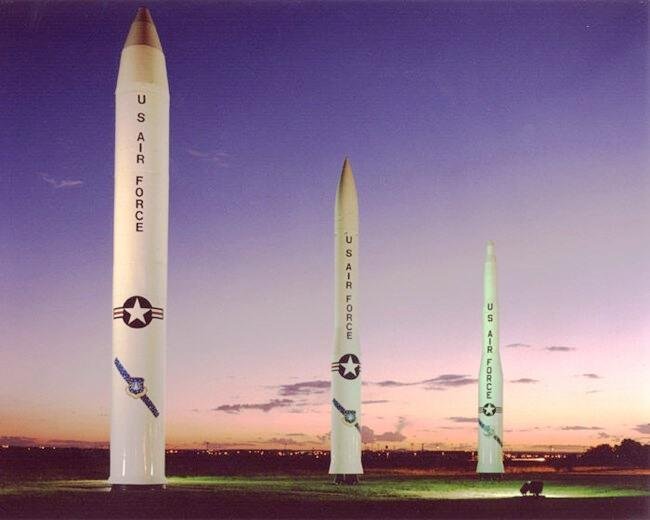
By the year 2024, the nuclear weapons strategy of the United States is focused on modernization and maintaining a strong deterrent capability amid growing geopolitical tensions and competition, especially with Russia and China.
America has the most missiles in the world, and the most nuclear weapons, America sells the most to the whole world, American Lockin Martin Company sells planes, drones, missiles, and AI weapons to everyone, wherever there is a war, in whichever country it is, America’s weapons are there, last time Donald Trump had announced that super-duper, ICBM, mirv technology hypersonic will be the fastest missile in the world.
Nuclear Arsenal and Modernization
The United States has an estimated 3,708 nuclear weapons in its stockpile, of which 1,770 are deployed on intercontinental ballistic missiles (ICBMs), submarine-launched ballistic missiles (SLBMs) , and strategic bombers. Modernization of the nuclear arsenal is a key priority, including the renewal and replacement of older components. This includes the development of the W93 warhead for SLBMs and ongoing efforts to modernize delivery systems such as the Ground Based Strategic Deterrent (GBSD) and Columbia-class submarines
| Missile Name | Type | Range | Notable Features |
| Minuteman III | Intercontinental Ballistic Missile (ICBM) | 13,000 km | Solid-fueled; MIRV-capable; land-based |
| Trident II (D5) | Submarine-Launched Ballistic Missile (SLBM) | 12,000 km | Solid-fueled; MIRV-capable; deployed on Ohio-class submarines |
| Tomahawk | Land-Attack Cruise Missile (LACM) | 1,600 – 2,500 km | Subsonic; launched from ships and submarines; capable of carrying nuclear and conventional warheads |
| JASSM (AGM-158) | Air-Launched Cruise Missile (ALCM) | 370 – 1,000 km | Stealthy; air-launched; precision-guided |
| AIM-120 AMRAAM | Air-to-Air Missile | 160 km | Beyond visual range; active radar homing |
| SM-3 (Standard Missile-3) | Anti-Ballistic Missile (ABM) | 700 km | Intercepts short to intermediate-range ballistic missiles; ship-based |
| AGM-114 Hellfire | Air-to-Ground Missile | 8 km | Laser-guided; used on helicopters and drones |
| Patriot PAC-3 | Surface-to-Air Missile (SAM) | 70 km | Mobile air and missile defense system; hit-to-kill technology |
| LGM-30G Minuteman III | Intercontinental Ballistic Missile (ICBM) | 13,000 km | Solid-fueled; MIRV-capable |
| AGM-86 ALCM | Air-Launched Cruise Missile (ALCM) | 2,400 km | Nuclear-capable; stealth; launched from B-52 bombers |
These missiles highlight the United States’ diverse capabilities in strategic deterrence, tactical operations, and advanced missile defense systems.
Strategic Concerns
The US is facing a complex strategic environment, with the risk of nuclear conflict increasing due to deteriorating arms control agreements. The New START Treaty with Russia, which limits the strategic arsenals of both countries, is set to expire in 2026, and its future remains uncertain. The lack of arms control agreements raises concerns about a new arms race, especially when both Russia and China are expanding and modernizing their nuclear capabilities. Council on Foreign Relations
Challenges and Policy Debates
There are significant debates over US nuclear policy, especially about the need for new nuclear capabilities and the possible resumption of nuclear testing. The Biden administration has continued to support modernization efforts with an emphasis on arms control and nonproliferation. However, the balance between maintaining a credible deterrence and preventing an arms race from escalating remains a contentious issue
Key Issues for 2024
1. Russia’s Nuclear Threat: The ongoing conflict in Ukraine and Russia’s nuclear aggression are major concerns. The US must monitor and respond to potential changes in Russia’s strategic posture, whether it is financial aid or the consignment of arms to Ukraine.
2. China’s nuclear build-up: Careful strategic planning is necessary to manage potential conflicts in the Indo-Pacific as China is rapidly expanding its nuclear arsenal. China is engaged in building future weapons from land to sky. There is no stopping Chinese President Xi Jinping.
3. North Korea’s nuclear ambitions: North Korea’s continued nuclear development and aggressive rhetoric is a direct threat that requires close attention and coordination with allies. There is no stopping Kim Jong Un. There is no stopping him.
In short, the US is focusing on modernizing its nuclear arsenal while addressing the strategic challenges posed by other nuclear powers. The balance between maintaining a strong deterrent and preventing an arms race is an important aspect of current nuclear policy.
How many nuclear missiles does Russia have?
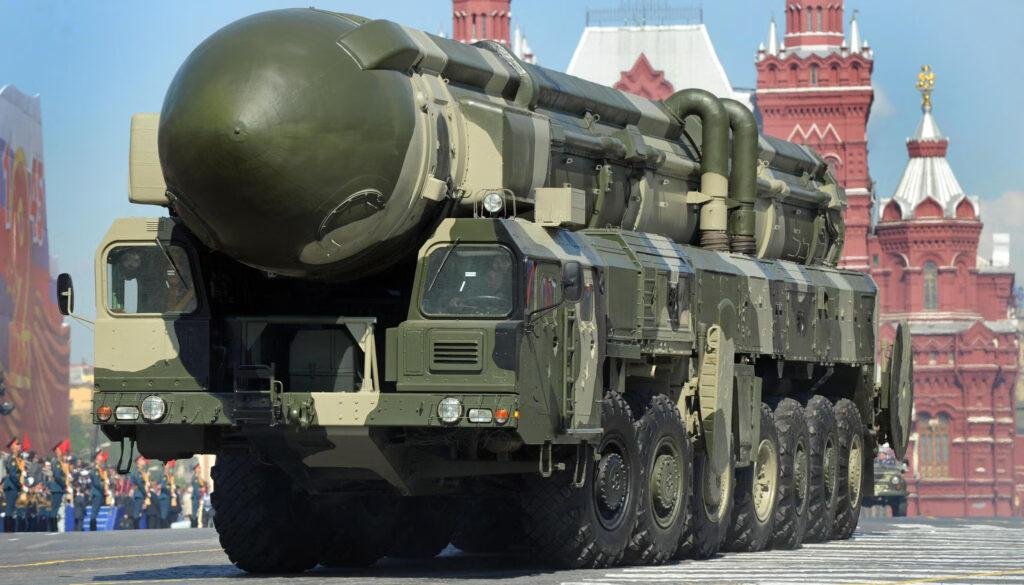
By 2024, Russia has a significant and modern nuclear arsenal, including both strategic and non-strategic warheads. The total inventory is estimated to contain approximately 5,580 warheads, the most in the world, ahead of the US.
Russia also has advanced weapons including nuclear, hydrogen, chemical, and laser missiles, drones, tanks, nuclear submarines, and other advanced weapons.
This includes approximately 4,380 stockpiled for operational forces and 1,200 retired warheads awaiting dismantling. Strategic nuclear forces include approximately 1,549 deployed warheads assigned to 540 strategic launchers.
| Missile Name | Type | Range | Notable Features |
| RS-28 Sarmat | Intercontinental Ballistic Missile (ICBM) | 10,000 – 18,000 km | Liquid-fueled; MIRV-capable; hypersonic glide vehicle (HGV) payload option |
| R-36M2 Voyevoda | Intercontinental Ballistic Missile (ICBM) | 11,000 – 16,000 km | Liquid-fueled; MIRV-capable; highly destructive yield |
| Bulava (RSM-56) | Submarine-launched ballistic Missile (SLBM) | 8,000 – 10,000 km | Solid-fueled; MIRV-capable; deployed on Borei-class submarines |
| Kalibr (3M-54) | Land-Attack Cruise Missile (LACM) | 1,500 – 2,500 km | Launched from ships and submarines; capable of carrying nuclear and conventional warheads |
| Iskander-M | Short-Range Ballistic Missile (SRBM) | 500 km | Mobile; capable of carrying nuclear and conventional warheads; highly maneuverable |
| Kinzhal (Kh-47M2) | Air-Launched Hypersonic Missile | 2,000 km | Launched from aircraft; hypersonic speed; nuclear and conventional warheads |
| Avangard | Hypersonic Glide Vehicle (HGV) | 6,000 km | Deployed on ICBMs; highly maneuverable; capable of evading missile defenses |
| S-400 Triumf | Surface-to-Air Missile (SAM) | 400 km | Advanced air and missile defense system; multi-target capability; can engage aircraft, UAVs, and ballistic missiles |
| RS-24 Yars | Intercontinental Ballistic Missile (ICBM) | 12,000 km | Solid-fueled; MIRV-capable; road-mobile and silo-based variants |
| Kh-101 / Kh-102 | Air-Launched Cruise Missile (ALCM) | 3,000 – 5,500 km | Stealth; Kh-101 (conventional), Kh-102 (nuclear); launched from bombers like the Tu-160 |
These missiles reflect Russia’s comprehensive missile development efforts, encompassing strategic deterrence, advanced hypersonic technology, and versatile missile defense capabilities.
Russia’s nuclear strategy and capabilities continue to be influenced by a combination of modernization efforts and geopolitical tensions. Key developments include the continued upgrade of intercontinental ballistic missiles (ICBMs), submarines, and strategic bombers. Road-mobile ICBM modernization is largely complete, with the focus now shifting to silo-based missiles
Additionally, Russia is developing new hypersonic weapons such as the Avangard, Kinzhal missile, and Tsirkon. These systems are dual-capable, meaning they can deliver both nuclear and conventional payloads. Their development is partly a response to US missile defense systems, aimed at ensuring that Russia can bypass these defenses if necessary. However, the production and deployment of these advanced systems face challenges. For example, the Sarmat missile system has been delayed due to financial and production issues within Roscosmos, exacerbated by Western sanctions. Overall, while Russia’s nuclear modernization continues, the broader strategic balance and operational readiness are affected by economic constraints and technological challenges.
North Korea and weapons of mass destruction
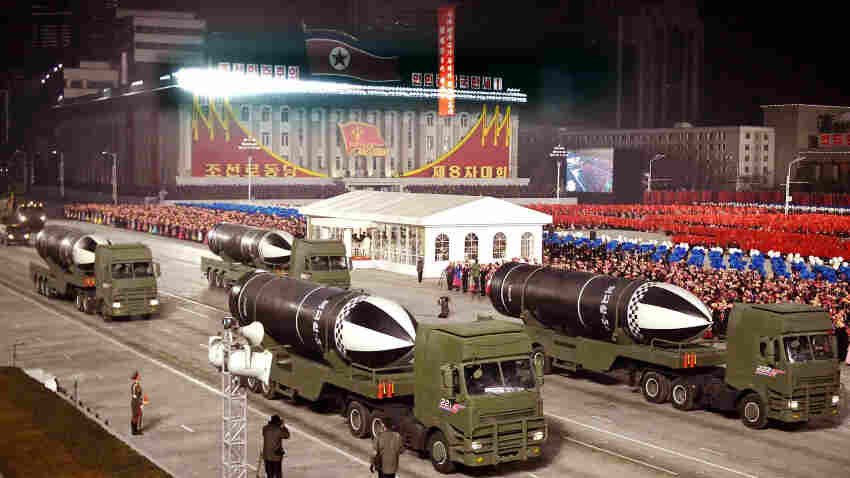
Until 2024, North Korea will continue to enhance its nuclear capabilities. Estimates suggest that the country possesses approximately 50 nuclear weapons, with the capability to produce six to seven additional warheads per year.
| Missile Name | Type | Range | Notable Features |
| Hwasong-15 | Intercontinental Ballistic Missile (ICBM) | 13,000 km | Capable of reaching the U.S. mainland; liquid-fueled; nuclear-capable |
| Hwasong-14 | Intercontinental Ballistic Missile (ICBM) | 10,000 km | First North Korean ICBM; liquid-fueled; nuclear-capable |
| Hwasong-12 | Intermediate-Range Ballistic Missile (IRBM) | 4,500 km | Can reach U.S. military bases in Guam; liquid-fueled; nuclear-capable |
| Pukguksong-2 | Medium-Range Ballistic Missile (MRBM) | 1,200 – 2,000 km | Solid-fueled; mobile; nuclear-capable; improved accuracy |
| Pukguksong-3 | Submarine-launched ballistic Missile (SLBM) | 2,000 km | Solid-fueled; launched from submarines; nuclear-capable |
| KN-23 | Short-Range Ballistic Missile (SRBM) | 450 – 690 km | Resembles Russian Iskander missile; highly maneuverable; conventional and nuclear warheads |
| KN-24 | Short-Range Ballistic Missile (SRBM) | 410 km | Mobile; highly maneuverable; conventional and nuclear warheads |
| Hwasong-9 (Scud-ER) | Short-Range Ballistic Missile (SRBM) | 1,000 km | Extended range variant of Scud missile; conventional and nuclear warheads |
| Hwasong-10 (Musudan) | Intermediate-Range Ballistic Missile (IRBM) | 3,000 – 4,000 km | Liquid-fueled; mobile; can reach Guam; nuclear-capable |
| KN-25 | Super-Large Multiple Rocket Launcher | 380 km | Rapid-fire capability; designed to overwhelm missile defenses; conventional warheads |
These missiles reflect North Korea’s advancements in missile technology, with a focus on enhancing their strategic deterrence capabilities and improving the mobility and accuracy of their missile systems.
North Korea has also advanced its missile technology, conducting multiple tests of ballistic and cruise missiles, including intercontinental ballistic missiles (ICBMs) capable of reaching the mainland United States. North Korea’s nuclear strategy includes developing diverse delivery systems, such as the Hwason-31 tactical nuclear warhead, which can be fitted on a variety of missile platforms. This versatility indicates a strategic focus on both tactical and strategic nuclear options. In addition, North Korea’s nuclear doctrine, revised in recent years, emphasizes the possibility of first use of nuclear weapons, further raising regional security concerns. The international community is cautious about North Korea’s nuclear progress, particularly given the possibility of a seventh nuclear test, which would further strengthen its nuclear capabilities. These developments highlight the ongoing challenges in addressing North Korea’s nuclear ambitions and the need for sustained diplomatic and security efforts to mitigate associated risks.
After 25 years, India has overtaken Pakistan in terms of nuclear weapons. For the first time, Pakistan has been shocked to hear the number of nuclear bombs of India.
Pakistan has once again suffered a defeat at the hands of India. Pakistan has once again fallen behind India in the race for nuclear bombs. Pakistan also has nuclear bombs, PM Modi says, so what do we have? Have we kept these for Diwali? Finally, India has overtaken Pakistan in terms of nuclear weapons. Indian people like to hear this, but it brings with it two questions. First, Pakistan is fine, but what about China? Secondly, where does India stand in comparison to the world? Apart from this, a question always remains in my mind can it ever happen that if there is a war between two nuclear weapons-possessing countries, will they use these weapons, and what will happen if they do so? I will answer all three questions. First, let us look at some statistics, and then after that, I will tell you why the world created such a dangerous thing as nuclear weapons and why it is being used daily. The number is increasing there are two organizations in the world, one is that which counts nuclear weapons – The International Campaign to Abolish Nuclear Weapons (ICAN keeps track of which country has how many, and the second is that which insists on reducing their number – Treaty on the Prohibition of Nuclear Weapons (TPNW) ) & The Nuclear Non-Proliferation Treaty (NPT), 1968.
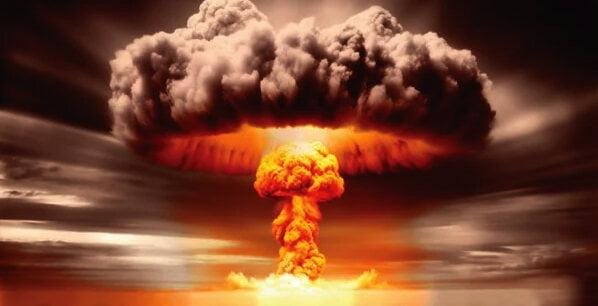
According to the report of Sweden’s think tank on nuclear weapons, India has overtaken Pakistan in terms of nuclear weapons. This year, the number of nuclear warheads in India has increased to 172, while Pakistan has 170. After Pakistan, if we talk about China, then India’s new weapons are long-range and can hit the right target. According to the World Report, till last year, India had 164 nuclear weapons, while India increased its number, while 9 countries including America and Russia worked to advance their nuclear weapons stockpile in the last 1 year. These countries also deployed many new weapons with nuclear capability. Both India and Pakistan continued to build a new nuclear delivery system in 2023. On the one hand, India is focusing on nuclear weapons to compete with Pakistan, on the other hand, it is also emphasizing weapons capable of long-range attack which can destroy the whole of China, that is, India is taking equal care of both its neighbors. In its report, it has just said that in the last 1 year, China’s nuclear warheads have increased from 410 to 410. Now the number of nuclear weapons in the world has reached 500, which is why India is now keeping a close eye on China. Now before knowing about the world’s nuclear weapons, let us see where this chaos in the world came from. In 1987, Britain’s Mrs. Margaret Fetcher gave a speech at the Soviet Official Banquet in Russia. There is a line in this speech that is famous even today and is also true. She had said that now a world without nuclear weapons would be less stable and more dangerous for all. That means without nuclear weapons our world would be less stable and more dangerous. Now even though years have passed since she said this, her words remain equally valid even today. That is why people are increasing the number of these weapons to make the world more stable. But the question is how did nuclear weapons start and how did the three most powerful countries of the world acquire nuclear weapons? America. Let us start with America. The philosophy of 1940 was the second world war at its peak. The world was in a state of making such weapons which would make them the most powerful in the world. Can make it powerful and win any big war America got the news that the Soviet Union had come close to making such a weapon, so it also accelerated its project and on 16 July 1945 America succeeded in making such a bomb. It conducted the first successful nuclear test in New Mexico and this one successful test completely changed the world in just three weeks. On 6 August 1945 America dropped the first atomic bomb on Hiroshima, Japan. According to government data, about 130000 people were killed in it. Three days later it also dropped a bomb on Nagasaki. In this, about 74000 people were killed and about 75000 were seriously injured. Fearing this bombing, Japan was forced to surrender on 14 August 1945. After this, the Second World War also ended. America started the Manhattan Project in 1942 to make nuclear weapons. Britain and Canada were involved in it. Senior officers of the US Army were involved in this project. Scientist Robert Oppenheimer was leading this program. Scientists from Britain and Canada were working in space and together they completed this project in 3 years the movie has just come out, Open Hear if we move towards the next country, it is Russia but it has the most nuclear weapons in the world i.e. 5889 nuclear weapons, its foundation was laid during the Soviet Union era itself, Sir, in 1922 Vladimir Lenin laid the foundation of the Soviet Union. Along with the formation of the Soviet Union, the Academy of Sciences was also formed by Lenin. Its purpose was to promote scientific development. The Radium Laboratory was also started under this department and from here the process of exploring the possibilities of nuclear weapons started for the first time. In 1943, the Laboratory of Measuring Instruments was established. This was also an organization formed under the Academy of Sciences. Its director was made another Koch Top. When he successfully tested the atomic bomb in 1945, the Soviet Union also presented its project. In 1946, Lenin built the first nuclear reactor in the Soviet Union. This was the first nuclear reactor in Europe. Earlier, China also had a nuclear reactor, but it took 3 more years to conduct a successful nuclear test. The Soviet Union did not just make weapons using nuclear power, but the first nuclear power plant in the world started here in 1954, that is, the nuclear seed was sown in the world from here. See, when Russia sowed the seed, the tree reached China as well. In 1949, a communist revolution came in China. China won the civil war and laid the foundation of the People’s Republic of China. China had brought such a regime which was fundamentally against America. To maintain it, they also had to keep pace with the world. For this, China also needed nuclear weapons. Till now, America and the Soviet Union had successfully tested nuclear weapons, but Mau was in no hurry to get nuclear weapons because they had to repair the damage caused by the civil war. They had other challenges to face. But in 1954, such an incident happened which forced Mau to make nuclear weapons. What happened this year, see, the war between China and Taiwan started. Every year, China planned to capture some islands of Taiwan and dropped bombs on them. Then the President of America, White Eisenhower, threatened Maui with a nuclear attack. After this threat, Maui China vowed to make China a nuclear power as soon as possible China successfully tested its first nuclear weapon in 1964 Two years later in 1966 it also tested the hydrogen bomb As if it was a threat it first became a lion and then a swashbuckler And in this way, the three biggest nuclear weapons countries of the world were formed Now let us come to
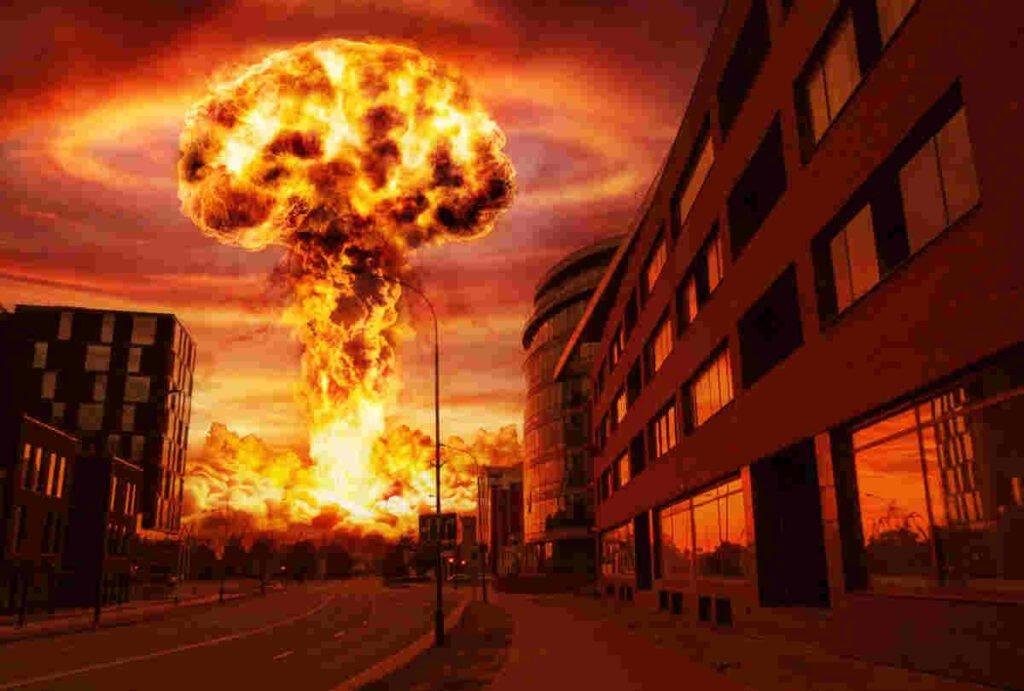
Who has how many weapons in the world today Which countries have how many nuclear weapons Now look friend, eight countries in front of the world have declared that they have nuclear weapons Russia has the maximum number of 5889 nuclear weapons America is in second place They have about 24 nuclear weapons China about 410 France 290 Britain 225 Pakistan 170 India 164 North Korea Peace There are many countries in the rest of the world who do not want to tell Muslim country Iran The report also claimed that Israel has about 90 nuclear weapons, although Israel neither denied it nor ever accepted it Apart from this, it is suspected that Iran also has nuclear weapons Apart from this, there are 6 countries where America and Russia have kept their nuclear weapons. These are called nuclear-hosting countries. The countries having nuclear weapons in America are Italy, Turkey, Belgium, Germany, and the Netherlands. Russia has also kept some of its weapons in Belarus. Now if we talk about all the countries, then 3904 nuclear weapons are currently deployed in salvos or aircraft across the world. Out of these, If something goes wrong or if they are needed, then they can be fired on other countries instantly. However, this is the first time that the Chinese Navy has kept some of its nuclear weapons on high operational alert. According to many reports, at this time China is increasing its stock of atomic weapons at the fastest rate compared to other countries. If we talk about the total number, then the number of nuclear weapons in the world has now reached 12121, out of which about 90 percent are controlled by Russia and America. According to reports, India, Pakistan, and North Korea are also preparing to deploy nuclear heads on their ballistic missiles. In 2018, SIPRI said that 90% of the world’s nuclear weapons are with Russia and America, although there has not been much increase in it compared to last year. Now look, those who had to tell, they did, so in such a situation the question arises that those who did not tell, why do they not want to tell? SIPRI says that since the start of the Russia-Ukraine war, many countries have not given the correct information about their nuclear weapons. In 2021, the member countries of the UNSC had promised to reduce nuclear weapons. They said that nuclear war can never be started, whereas now they have been put on high alert. On the other hand, to stop the nuclear arms race, Russia and America signed the New START Treaty, which was canceled by Russia after the completion of one year of the Ukraine war. The New START Treaty was a nuclear agreement between America and Russia. Under this, both the countries used to share information about the testing of their nuclear weapons with each other. Russia had alleged that America was misusing the information about Russia’s nuclear weapons, so now no one wants to give the correct information. Let us now come to this.
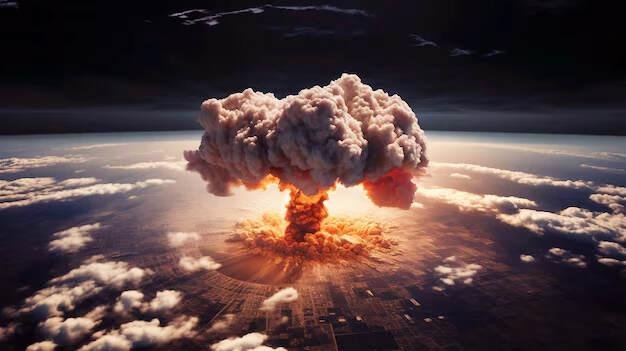
On the big question of why the world needs nuclear weapons, now I will talk about another organization that wants to reduce the number, i.e. I CAN. According to the report of I CAN, the world is increasing its expenditure on nuclear weapons every year. In 2023, 9 countries spent about 8 lakh crore rupees on nuclear weapons. Compared to 2022, in 2023, nuclear weapons have increased by half again, that too at a time when the world is witnessing the chances of nuclear war. In these wars, the three countries that have used nuclear weapons are America, Russia, and Israel, hence this jump has been seen in 2023. The desire to become number two powerful, see, there is a competition among the nuclear power countries as to which country will be more powerful, hence they want to collect as many weapons as possible. The report of SIPRI is an example of this. The report revealed that for the first time, India has overtaken Pakistan in terms of the number of nuclear weapons and India has made 172 nuclear bombs. Pakistan has 170 nuclear bombs and similarly, Britain has also made 172 nuclear bombs. Given the threat from China and Russia, it will increase the number of its nuclear weapons to 260. At present, it has 225 nuclear weapons. The overall point is that as the situation is, there will only be an increase in the number of weapons. If it has to be eliminated then all the countries will have to do it together because whichever country has these weapons left will be the most powerful. But this is also certain that if there is a world war and nuclear weapons are used in it, then I remember Albert Einstein’s words that it is not known with which weapons World War 3 will be fought, but World War 4 will be fought with girls and stones. What do you think about the rest?
Which drones and missiles do India and Pakistan have?
Recently the US has imposed sanctions on four companies allegedly linked to Pakistan’s ballistic missile program.
A senior official of the US President’s Office has said that Pakistan is developing long-range ballistic missiles whose range can extend beyond South Asia to America. US Deputy National Security Advisor John Final has said that what Pakistan is doing raises a question about what is its goal of the ballistic missile program. Earlier, the US had raised questions about Pakistan’s ballistic missile program and imposed sanctions on four companies associated with it. In such a situation, the discussion about the stockpile of weapons available with Pakistan and its neighbor India has also started gaining momentum. Let us take a look at who these two neighboring countries are and how powerful they are. A report was released in June this year by the Swedish think tank Stockholm International Peace Research Institute, Shivpuri. In this report, it has been said that India has 172 and Pakistan has 170 nuclear warheads, while China has been said to have 500 nuclear warheads. SIPRI has said in the Year Book 2024 that nuclear-armed countries are constantly modernizing their nuclear weapon stockpiles. From the data of the report, it seems that India and China are developing nuclear weapons. There is a race going on between Pakistan and Pakistan for nuclear weapons. The report said that Pakistan is developing nuclear weapons to counter India, while India’s focus is on deploying long-range weapons, such weapons that can hit China. If we compare the military capability of India and Pakistan in terms of drones, it is revealed that both countries have increased it in recent times. Both have not only bought many foreign drones but have also developed such technology themselves which can monitor the enemy, spy, or target targets without a pilot. In October this year, India signed an agreement to buy 31 Predator drones worth three and a half billion dollars from America. America’s Predator drones are very expensive. The price of one drone in Indian currency is about 950 crore rupees. India is strengthening its military capability with the cooperation of countries like Russia, America, and Israel. Apart from this, these weapons are also being developed within the country. India has drones like Heroine Mark One and Mark 2 drones, Rustom, Haaran Wow, RP drone, Drishti 10, and Sarkar Mark Two. Mark 2 drone is from Pakistan. India’s drone program started with the use of American drones. With the help of these drones, India’s Defense Research and Development Organization (DRDO) developed a drone named Lakshya. After this, DRDO developed many short-range drones like Nishant and Gagan, which can make high-resolution 3D pictures. Similarly, Rustam 2 can land on its own and it is an excellent drone for surveillance and spying. By the way, India has imported the most drones from Israel. India imported drones interestingly from Israel in 1998. Talking about Pakistan, it has built drones like Barak and Shahar Par on its own. It also buys drones from Turkey, China, Germany and Italy. It has Turkey’s modern Bayraktar drones TV2 and 1kg, while it has also acquired drones like Wanglong Tu and CH4 from China. During the year 2022, Pakistan built the flagship drone Shahar Par Tu. Talking about missiles, India has Prithvi One, Prithvi Tu, Prithvi 3 Prahar, Dhanush, Brahmos, and Sagarika. There are missiles like Agnibaan, Agni 2, Agni 3, Agni 4, Agni 5, K4 and K5. Some of these are operational while some are being tested. There are seven air-to-air short-range and long-range missiles among them. Pakistan has missiles like Hath One, Hath Tu, i.e. Ab Dali Hath 3, i.e. Ajnabi Shaheen One, Shaheen One, A Gori One, Gori Tu, Shaheen 2, and Gauri 3.
